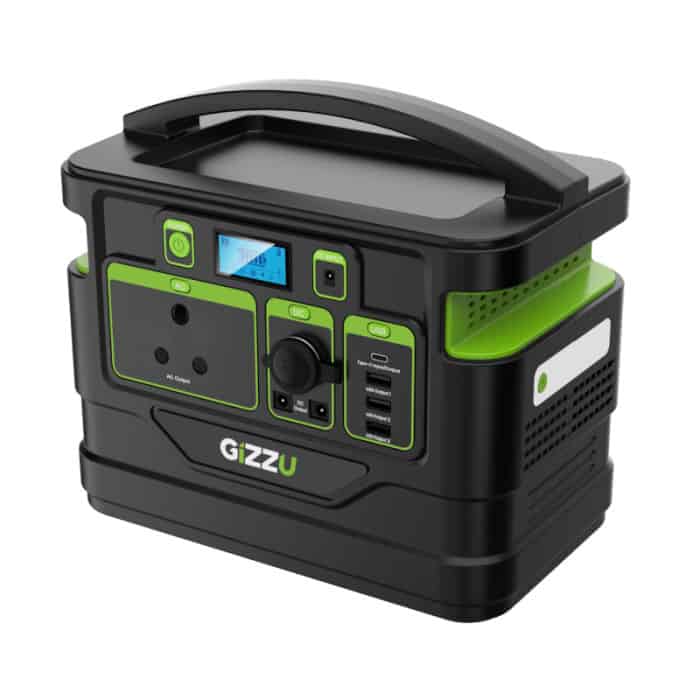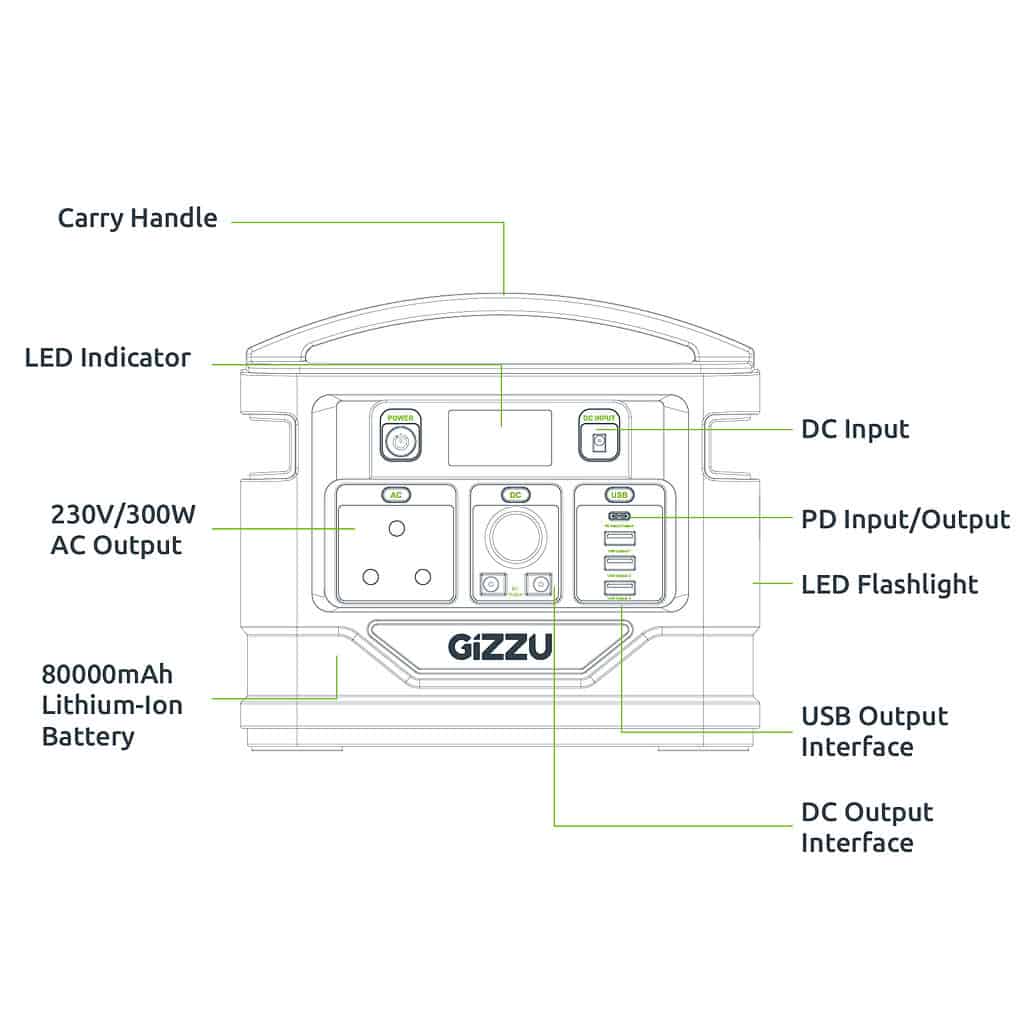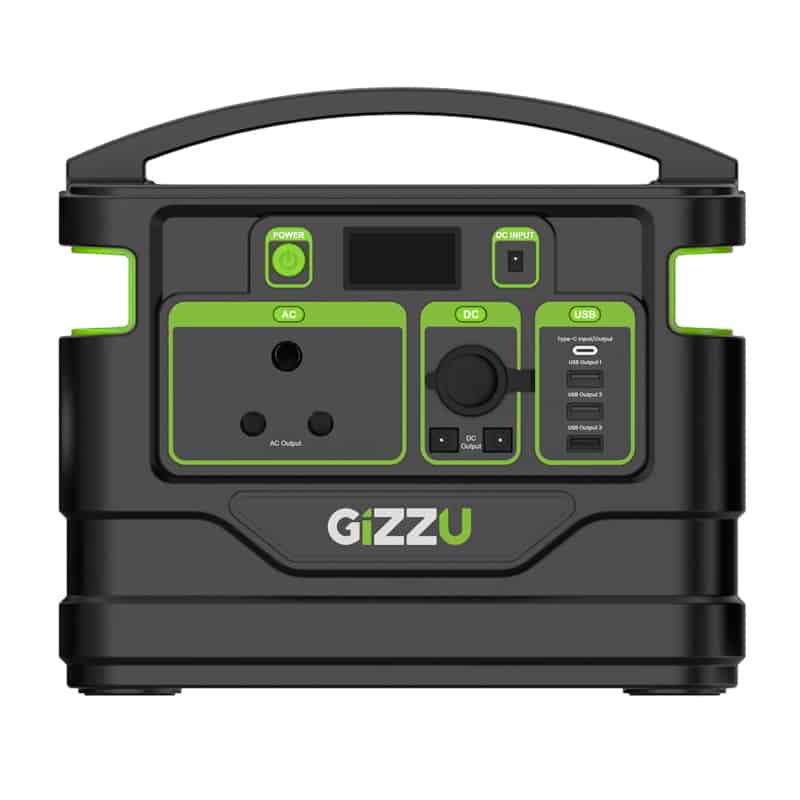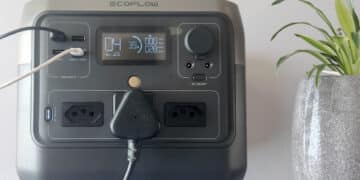South Africans have been tormented by ongoing loadshedding throughout 2022. While things may have looked to be on the up at some stage in the middle of the year, the power utility’s struggles are set to continue for the next few months, if not years, to come. With the continued daily battles to keep the lights on in your home, there are a number of different solutions that present themselves for different requirements. Gizzu is a brand that offers an extensive range of products to assist consumers with varying power options. The Gizzu 296Wh Portable Power Station is one such solution.
RELATED: Lalela Home Office (720W) Inverter Review – For Loadshedding
Earlier in the year, I reviewed a full-sized inverter, the Lalela Home Office (720W) Inverter, which provided sufficient output to run some of my electronics for a few hours at a time. The Gizzu 296Wh Portable Power Station offers a much smaller capacity in this regard. However, it does so in a much smaller build, which you can easily transport around with you.
Although it wouldn’t make sense to compare these two units like-for-like, I will point out some of the differences between the two options. And, as always, to answer the question of whether the portable power station is worth a look and worth its price.
Build and Design

As its name suggests, the unit is very portable. The Gizzu 296Wh Portable Power Station weighs around 3.4 kg. Putting this into perspective, that’s about the weight of three average laptops. It’s not much at all. In addition, it has a very small frame as well, measuring 230x203x140mm. Again, putting that into perspective, it’s about the size of two loaves of bread stacked on top of each other, albeit slightly wider.
With a build this portable, it really makes it easy to move it around from place to place, even when away from home. Additionally, it also stores away pretty neatly, too. When not in use, I could comfortably fit it into my TV stand cabinets. That said, there haven’t been many days when I haven’t utilised the unit over the past month or so, given the extremes loadshedding has reached – regularly fluctuating between stages 4 and 6.
The unit has a black plastic finish with hints of lime green scattered throughout. Its green highlights also extend to the various sections on the device, which I’ll touch on shortly. It’s not quite the premium build, but it does not feel or look cheap.
It’s not just about the small frame either. The unit’s plastic frame is also moulded into a very nifty package, including a handle and a user interface that makes it quite easy to use. On the front side, the unit has all its ports, which includes an AC, DC and USB outputs. Each of these types of ports are sectionalised, each with its own power button. This means you can turn the power out on/off when using just that output.
Regarding the user interface, there is a monochrome LED monitor on the front. It depicts each of the power sections and provides an indication when it’s powered on, as well as the overall battery level in the form of five bars on the top of the screen. The UI monitor will also turn off when not in use to save on power.
Furthermore, there is a separate button on the side of the unit. This button powers the torchlight below it by means of a long-press. It’s quite a bright light as well and when I used it for the first time took me by surprise. It works great for both inside and outside use.
Lastly, the device also includes in its contents quite a few different cables for your use in different situations. You can also use the included cables from your devices and easily connect them to the power station.
Overall, the design is quite basic but also quite brilliant. It’s readily available to transport, given its compact frame and lightweight build.
RELATED: Gizzu 100W Mini DC 46Wh UPS Review – For Those On A Budget
Gizzu 296Wh Portable Power Station Specifications
There is quite a lot to unpack when it comes to the specifications of the Gizzu 296Wh Portable Power Station. It’s not your average tech accessory at home, so making sure you get the most out of your unit based on its capacity is crucial. Here is the extended rundown of the unit’s specifications.
It has a capacity of 296Wh with a 300W power output. Converted to mAh this works out to roughly 80,000mAh. This is more than sufficient to power all small appliances and accessories around the home, as well as a few mid-sized units as well, including your TV.
It utilises a Lithium-Ion battery, which can be recharged using the included 18V/3A AC adapter. On paper, it would take 6.5 hours to fully recharge from 0% using this option. However, it also supports various other recharge means. This includes the car’s DC car charger (at 9.5 hours), PD port (USB Type-C Power Delivery) with 45W at 7.5 and a combination of AC adapter and PD port at 3.5 hours. In addition to this, it also supports solar panel recharging. Gizzu sells this as an optional extra for when you want to utilise its portability outdoors. Using this method, you can expect a recharge time of around 6.5 hours.
The expected lifespan of the battery is listed at 1,000 recharge cycles. This means that you should be able to recharge the unit up to around 1,000 times before any real deterioration starts to kick in. This would mean that the battery doesn’t last as long or hold as much charge as it originally did. Only time will tell how long this will take. With the current pace of recharging once every 3-4 days, it would take 2-3 years before any observable change. I’ll keep the review up to date when any changes are noticeable in this regard.
When it comes to output, there are also several options available for your devices. The first of these is the AC output. It supports 250V/50Hz at 300W. Additional output options include a PD output with several options – 5V/3A, 9V/3A, 12V/3A, 15V/3A, 20V/2.25A – three USB ports and a DC output of 12V/12A/. The three USB ports also have varying outputs, with the first offering 5V/3A, 9V/2A and 12V/1.5A with the 2nd and 3rd ports offering 5V/3.1A.
As an electrical power-generating appliance, several protection features have also been built in. Gizzu has added quite a few of these protections to protect the unit itself and the devices it supplies power to. And most importantly, protects the end-user as well.
For starters, it includes short-circuit protection coupled with over-current and over-voltage protection. On the opposite end, it supports under-voltage protection and crucial overload protection. Finally, it also has a temperature monitor which protects against high temperatures if the unit overheats.
RELATED: EcoFlow Brings An Amazing Loadshedding Survival Kit to South Africa
Gizzu 296Wh Portable Power Station Performance

When it comes to actual, real-world performances, there are quite a few tests I ran through to get a good understanding of what works best. I was able to use multiple ports concurrently for different types of applications to make sure I was up and running for a long as was needed. While loadshedding would typically last just over two hours (or the occasional 4-hour stint during stage 6), the Gizzu 296Wh Portable Power Station never once ran out of juice during this timeframe.
I started off with a few smartphones’ recharges for the most basic of tests. This worked well, and after charging and recharging the four phones in our household two to three times, it only dropped one bar on the LED battery monitor. On paper, it’s stated that you should get more than 20 individual charges for your smartphone, which, by all accounts, seems to be justifiable.
After a few days of use with various tech, such as my laptop, smartphone and monitor, it worked quite well throughout. When I was ready to measure its full performance again, I tested it using my laptop and plugged it into the power station until it ran out of power. On average, I would eke out about 8-10 hours of use under a normal load. This means you can get a full day of work under your belt from the unit reasonably easily.
Taking things up a few notches, I then ran our backroom’s 50” 4K TV exclusively on the power station. The rest would run over a few days, where I would plug the TV in and let it run down the battery. The results here were also quite impressive. I was surprised that the TV would run from the power station over a period of about five to six hours. On the odd occasion, it would reach close to around seven hours with just the TV plugged in. Gizzu suggested that a 42” LED TV would average three hours on a single charge. However, given my testing, I reached almost double the norm.
A combination of all the above-mentioned test appliances yielded varying results. Using a laptop and TV, along with the router, lasted more than three hours before reaching the last bar. Then, running a few games on the laptop could still manage over four hours of usage without any additional devices plugged in.
Irrespective of your type of use case, the ultra-portable Gizzu 296Wh Portable Power Station was more than capable of holding its own through the standard loadshedding period and even pushed to a full day of usage in some test cases. Suppose you’re looking to get outdoors these holidays. In that case, the unit will also be able to support outdoor usage across multiple appliances, whether on a day at the beach (remember to keep the unit covered), at the lake, or while on the road to your destination. And, given its recharging options from the car or solar panels, you can even use the unit while camping out for a few days as well.
When in use, depending on the load, the unit does heat up, which then triggers the built-in fan. That said, you won’t feel this heat when pressing your hand on the case, nor will the air from the fan’s output feel all that hot. It’s not the quietest fan around but it isn’t loud either. It turned on almost always when using the TV and also when running games on the laptop. In almost all other use cases it was relatively silent in operation.
RELATED: Technological Breakthroughs To Help the Advancement of Medicine in 2022
Should You Buy the Gizzu 296Wh Portable Power Station?
Over the years in the tech industry, I’ve seen many device types come and go, along with a few gimmicks that didn’t really take off but for a few sales rushes. With the current state of power availability in South Africa, we know that loadshedding is here to stay. As a result, portable charges for your home won’t soon “go out of style.” The Gizzu 296Wh Portable Power Station delivers quite a bit of performance in a very compact and portable package that works great.
As I continue to use the power station, I find it more and more useful. It may not be able to power my fridge or run the kettle for a cup of tea but it does more than it should be capable of from such a small device. Compared to the much larger Lalela Home Office (720W) Inverter, it packs quite the punch and may actually be the better option despite less battery and power output overall.
The unit carries a recommended retail price of R9,999 and is widely available across the country. You can get your hands on one via Takealot. It may seem like a bit of a steep price but carries a slightly lower premium than your average mid-range smartphone. So, if you’re in the market for an upgrade, it may be worth holding that off and opting for a Gizzu 296Wh Portable Power Station instead.
The Review
Gizzu 296Wh Portable Power Station
The Gizzu 296Wh Portable Power Station is a brilliant, compact device for the majority of your power needs. It is capable of powering your PC, laptop, router and monitor for hours at a time and can even power your TV for half the day. Thanks to its portable build, you can just as easily take it along on trips, camps and the likes. It a great addition to solve your loadshedding needs.
PROS
- Ultimate portability – compact and lightweight
- Multiple power outputs
- Added flashlight
CONS
- Fan can be distracting at times

















I am looking for a solar panel for my 296wh
We’re can I buy one
I suppose. It depends on the TV in question. I fall just short of getting through a 2 hour loadshedding with my 55″ Oled LG.
Also, careful of the retail price. I got mine for R5k. Takealot is in the process of trying to weed out the price gougers.